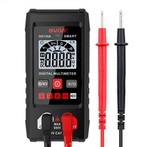What do you know about sound level meters
There are generally three types of weighted networks: A, B, and C. A-weighted sound level simulates the frequency characteristics of low intensity noise below 55dB in the human ear, B-weighted sound level simulates the frequency characteristics of medium intensity noise from 55dB to 85dB, and C-weighted sound level simulates the frequency characteristics of high intensity noise. The main difference among the three is the degree of attenuation of the low-frequency components of the noise, with A having the most attenuation, B taking second place, and C having the least. A-weighted sound level is currently the most widely used type of noise measurement in the world due to its characteristic curve close to the auditory characteristics of the human ear, while B and C are gradually not used.
Definition:
The noise meter, also known as the noise meter or sound level meter, is the most basic instrument in noise measurement. A sound level meter generally consists of a capacitive microphone, preamplifier, attenuator, amplifier, frequency meter network, and effective value indicator head. The working principle of a sound level meter is that the microphone converts sound into electrical signals, and then the preamplifier transforms impedance to match the microphone with the attenuator. The amplifier adds the output signal to the network, performs frequency weighting (or external filter) on the signal, and then amplifies the signal to a certain amplitude through the attenuator and amplifier, sending it to the effective value detector.
Classification:
1. From the measurement object, it can be divided into feature measurement of environmental noise (sound field) and measurement of sound source features.
2. From the time characteristics of the sound source or field, it can be divided into steady-state noise measurement and non-stationary noise measurement. Non steady state noise can also be divided into periodic variation noise, irregular variation noise, and pulse noise.
3. From the frequency characteristics of the sound source or field, it can be divided into broadband noise, narrowband noise, and noise containing prominent pure tone components.
4. From the perspective of measurement accuracy requirements, it can be divided into precision measurement, engineering measurement, and noise survey.






